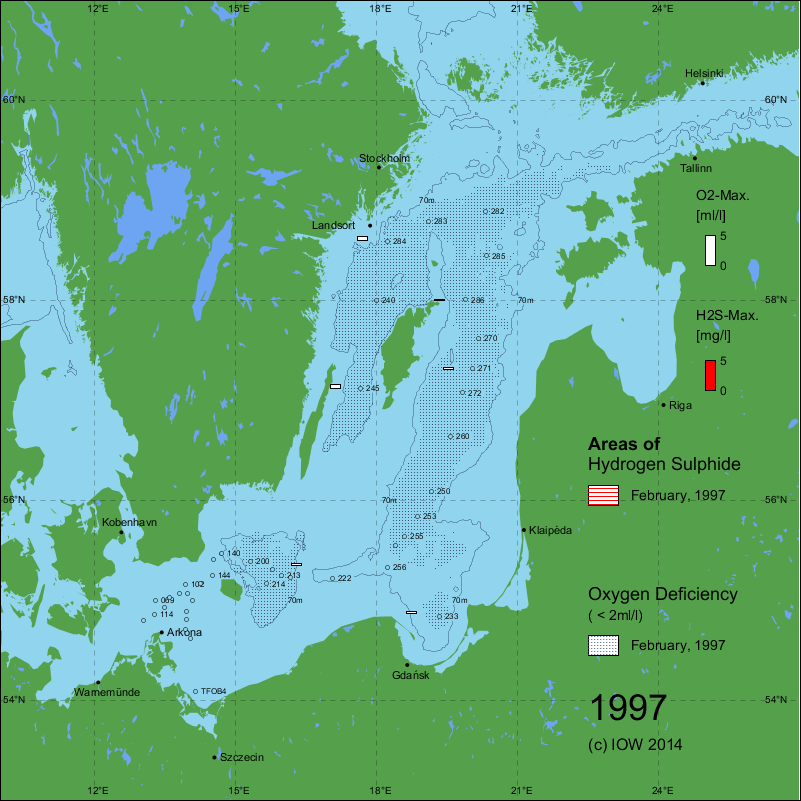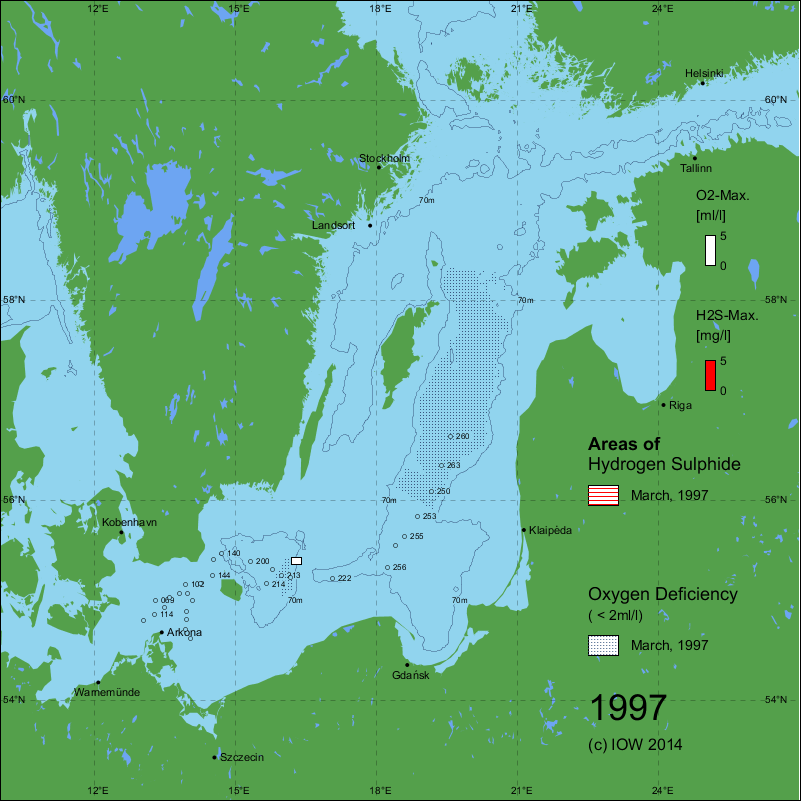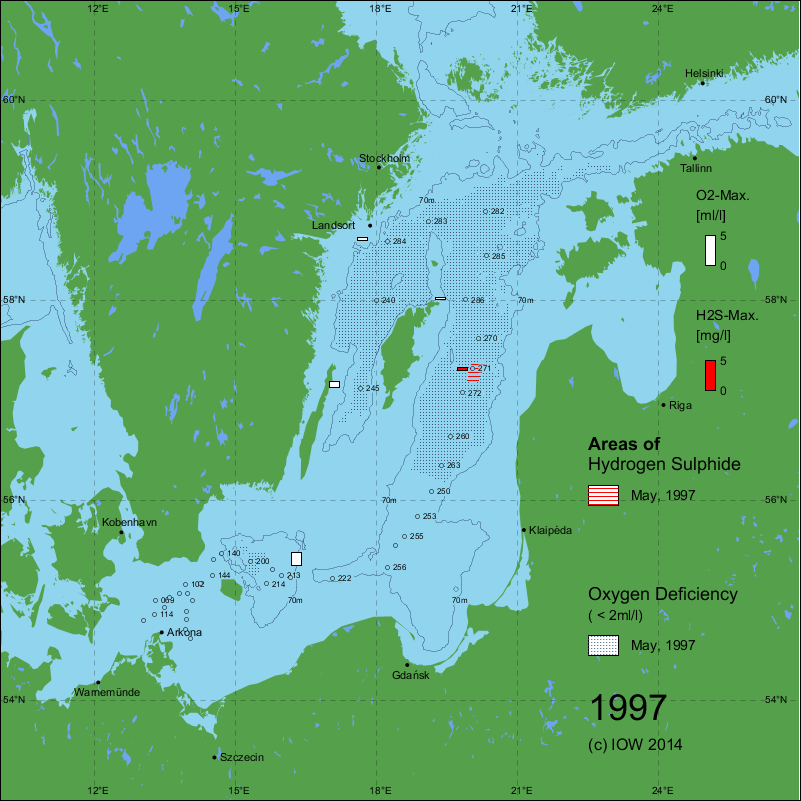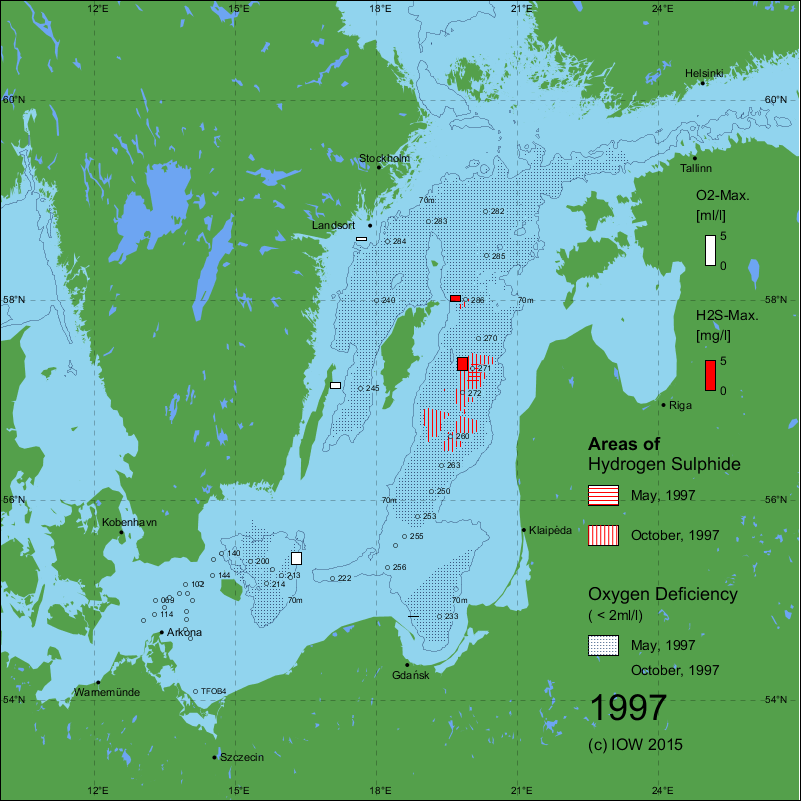
Hypoxic and anoxic regions in the Baltic Sea, 1997
The content of this webpage is part of the Marine Science Report No 100 2016 and should be cited as:
Susanne Feistel, Rainer Feistel, Dietwart Nehring, Wolfgang Matthäus, Günther Nausch, Michael Naumann: Hypoxic and anoxic regions in the Baltic Sea, 1969 - 2015. Meereswiss. Ber., Warnemünde, 100 (2016) doi: 10.12754/msr-2016-0100
All version information and information on further technical development are available via the website https://www.io-warnemuende.de/msr-2016-0100.html

This work is licensed under a Creative Commons Attribution-NonCommercial 4.0 International License.

Jan/Feb, 1997: download SVG (computed 2016)
|

Mar/Apr, 1997: download SVG (computed 2016)
|

Apr/May, 1997: download SVG (computed 2016)
|

Jul/Aug, 1997: download SVG (computed 2016)
|

Oct/Nov, 1997: download SVG (computed 2016)
|

Apr/May & Oct/Nov, 1997: download SVG (computed 2016)
|
| Because of the November 1996 inflow, the central Baltic deep water became oxic until May. From August onwards, the layer below 150 m in the eastern Gotland Basin again became anoxic. The western Gotland Basin deep water continues to be oxic. In September, an inflow of exceptionally warm, saline and oxygenated water occurred, later identified as a moderate MBI (MATTHÄUS, 2006). At the end of October, the oxygen-rich water crossed the Słupsk Furrow into the central Baltic Sea (MATTHÄUS et al., 1998a, 1998b). | |
References:
- MATTHÄUS, W., NAUSCH, G., LASS, H. U., NAGEL, K., SIEGEL, H., 1998a: The Baltic Sea in 1997 – Impacts of the extremely warm summer and of the exceptional Oder flood. – Dtsch. Hydrogr. Z., 50, 45-67.
- MATTHÄUS, W., NAUSCH, G., LASS, H. U., NAGEL, K., SIEGEL, H., 1998b: Hydrographisch-chemische Zustandseinschätzung der Ostsee 1997. – Meereswiss. Ber., Warnemünde, 29, 1-65, doi: 10.12754/msr-1998-0029
- MATTHÄUS, W., 2006: The history of investigation of salt water inflows into the Baltic Sea – from the early beginning to recent results. – Meereswiss. Ber., Warnemünde, 65, 1-73, doi: 10.12754/msr-2006-0065